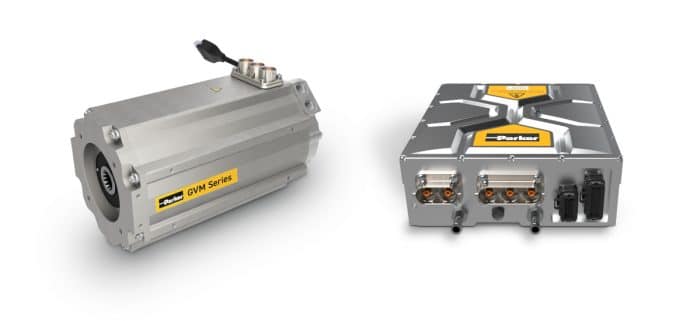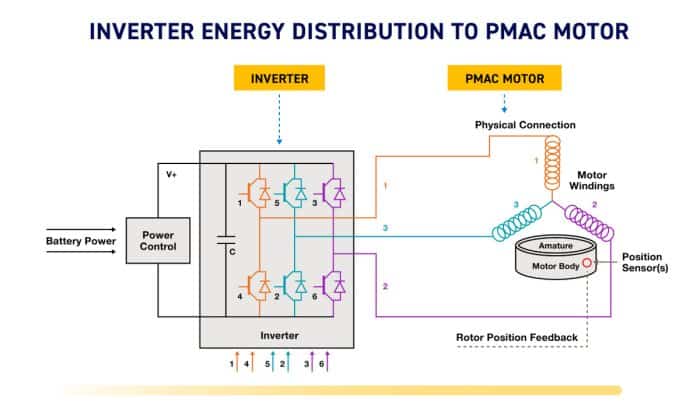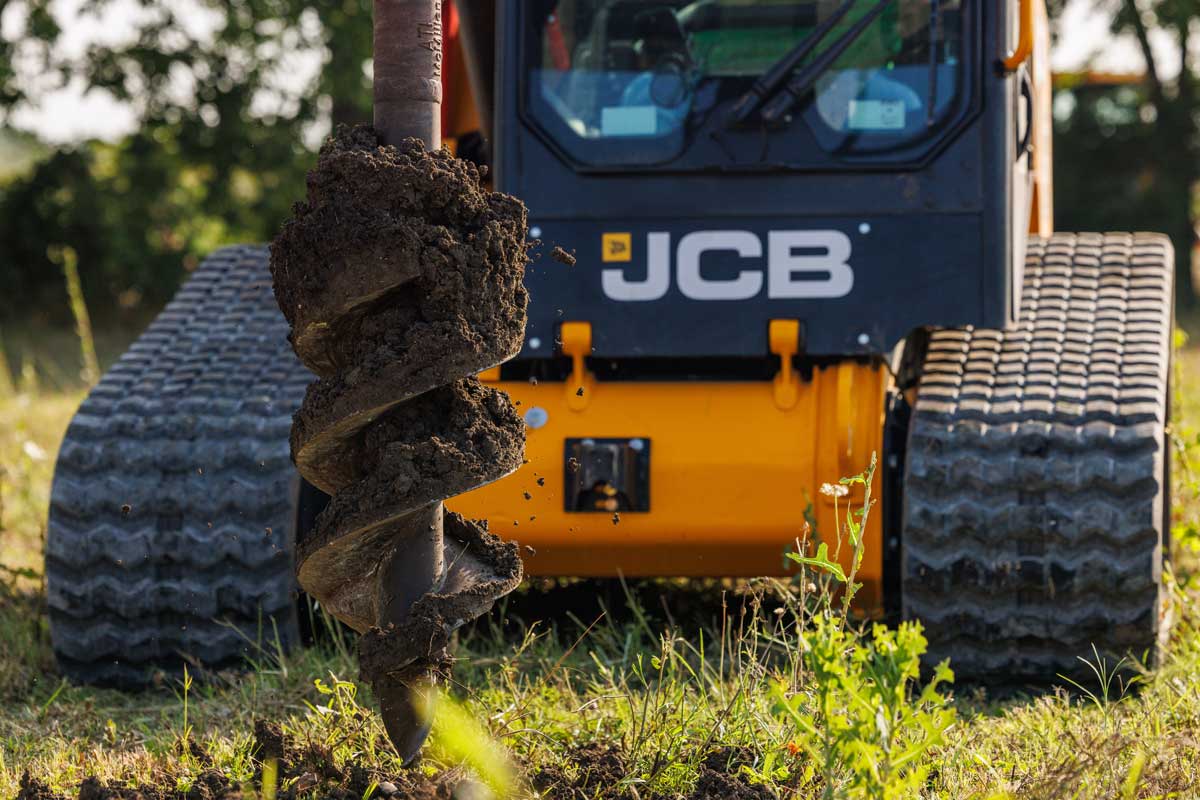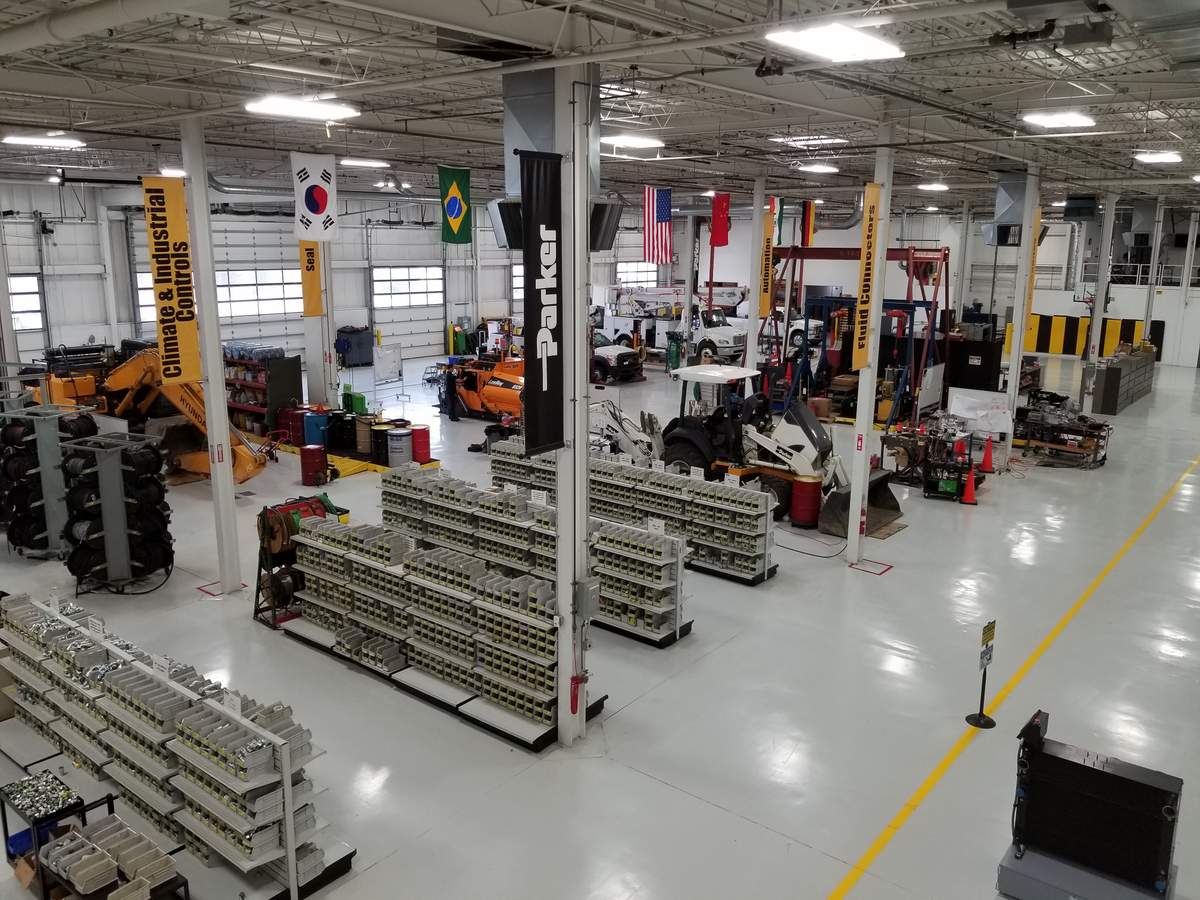The Importance of Properly Selecting and Tuning an Inverter to an Electric Motor

With more companies attempting to electrify their equipment, a common challenge is finding an optimal solution that meets or exceeds the performance of traditional diesel systems. The key to optimizing the performance of electric equipment is properly selecting and configuring the inverter to the electric motor, which consists of setting the proper motor electrical parameters into the inverter and tuning the current and velocity loops.
Permanent magnet (PM) motors are preferred in mobile equipment due to their compact size and greater efficiency than induction motors (IM). Since PM motors have more capabilities and are, ultimately, more efficient than IMs, a programmed inverter is required for their operation.
Specifying the correct motor parameters for the inverter is based on several factors, including:
Type of motor technology, such as permanent magnet, induction, or switched reluctance- The electrical characteristics of the motors, such as resistance, inductance, and voltage constant
- Motor limits, including current, torque, power, and speed
- D (voltage) and Q (current) axis control parameters
- Ambient operating temperature requirements
- Any application information from the customer, such as duty cycle
Single Supplier Verses A Combination of Suppliers
An important first step is to determine whether to purchase the motor and inverter from a single supplier or a combination of suppliers. With so many motor and inverter manufacturer options in the market, customers are not always willing to purchase the motor and inverter from a single supplier. For example, a motor or inverter may be better from one vendor verses another. In addition, most inverters are agnostic, meaning they will work with several other vendors’ motors.
Deciding between a single supplier or multiple suppliers for your electric system’s inverter and electric motor can mean the difference between the supplier calibrating, tuning, and then fine tuning the inverter for your specific application or doing all three tasks on your own.
Specifying a single supplier for both the inverter and motor components offers the convenience of that supplier configuring the inverter and tuning to the motor’s optimal performance. If you specify the inverter and motor at the same time, you get the benefit of consistent, reliable expertise from one manufacturer on how the two components work together to accurately configure and tune the system.
In addition, it is possible for a single supplier to provide even greater performance tuning based on your specific application. This process includes tuning the current and speed loop of the system. Fine tuning your inverter through the manufacturer can be achieved through the supplier’s application engineers, who are familiar with your specific application and system requirements. A single supplier may be the ideal choice if that supplier has on-site dynamometers to run the customer’s captured duty cycle (speed and torque) values of their application.
Electric construction equipment is on the rise. Learn all about the exciting products leading the charge.
By choosing a single manufacturer for both the motor and inverter, you can save valuable time and effort in ramping up your system to its optimal efficiency. This level of optimization can further increase the efficiency of your electrified system significantly such that it outperforms a traditional diesel system and, potentially, a motor and inverter from a combination of suppliers.
When choosing a single supplier, it is important to identify a manufacturer that offers quality components, which will provide more reliability of your system tuning and significantly limit the need for subsequent support. For example, a PM electric motor design with a stable magnetic flux field provides a narrow gap between the motor’s rotor and stator, offering little variance between the input current to torque relationship. As a result, the inverter will generate more stable current and speed loops.
In addition, when selecting a single source partner, be sure to investigate the manufacturer’s complete electrification portfolio. This research will ensure the manufacturer’s range of product offerings sufficiently match your current and future applications, providing you with simplified sourcing.
If you do choose different suppliers for your inverter and motor, be prepared to do your homework to calibrate, tune, and fine tune the system on your own. This process includes, but may not be limited to, the following steps:
- Determining your motor parameters (motor technology, electrical characteristics, and more)
- Selecting a complementary motor and inverter
- Wiring the motor to the inverter
- Verifying motor alignment
- Tuning the current loop with a diagnostic power analyzer with an integrated scope meter
- Testing the speed loop If the current loop is successful
- Tuning the speed loop through trial and error
The reality is that mixing brands of motors and inverters can require significant research into the product offerings of all chosen manufacturers and multiple rounds of experimentation to reach your system’s ideal efficiency.
Gone are the days of simple analog inverters, which allowed you to adjust the proportional gain to the velocity loop with a simple screwdriver. With today’s digital electronics, there are numerous parameter options available, which increase the need for greater expertise than in the past when analog inverters were more prevalent.
Another potential issue of dealing with multiple manufacturers is the difficulty associated with identifying and arbitrating the root cause if there is an issue. Often one manufacturer blames the other and customers are left to either figure it on their own or pay a consultant for their expertise. The customer who once thought this route may be less expensive may now be paying for consulting hours and dynamometer testing while their system is still inoperable.
The Benefits of Tuning

Whether you source your components from a single or multiple suppliers, tuning your system for its greatest performance and efficiency is clearly a primary objective. In other words, a finely tuned system should result in consuming less battery energy to achieve the desired performance.
In addition to system efficiency, the other benefits of tuning include:
- Smoother system operation through controlled system response and accuracy, resulting in:
- Less operating noise through the decrease of system chatter
- Increased safety by decreasing machine instability through pulsing or lunging due to a loss in traction or inconsistent torque
- Higher acceleration and deceleration rates
The Value of Choosing the Right Partner
Due to the complexity of modifying or implementing an electric system for optimal efficiency, a knowledgeable partner is critical in order to shorten your time to market, reduce the need for trial and error, help you achieve your system’s optimal efficiency faster, and provide savings in implementation costs. A solid partner can also help you electrify your entire product portfolio by using similar solutions for multiple applications, thus standardizing the support of your company’s electric product lines. In summary, the right partner can help you achieve a proven, long-term outcome that outperforms its traditional counterparts and even exceeds your electrification system performance expectations.




